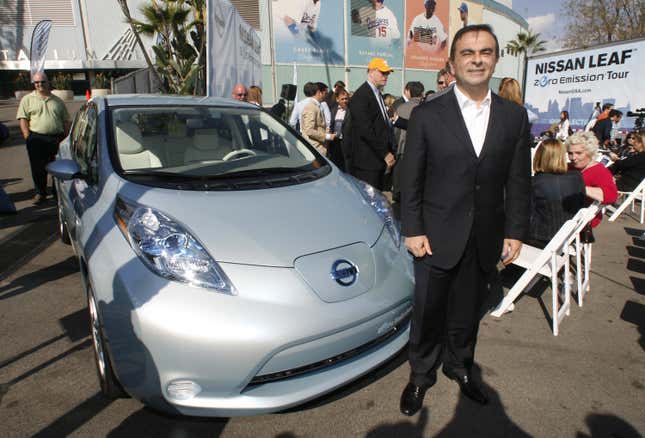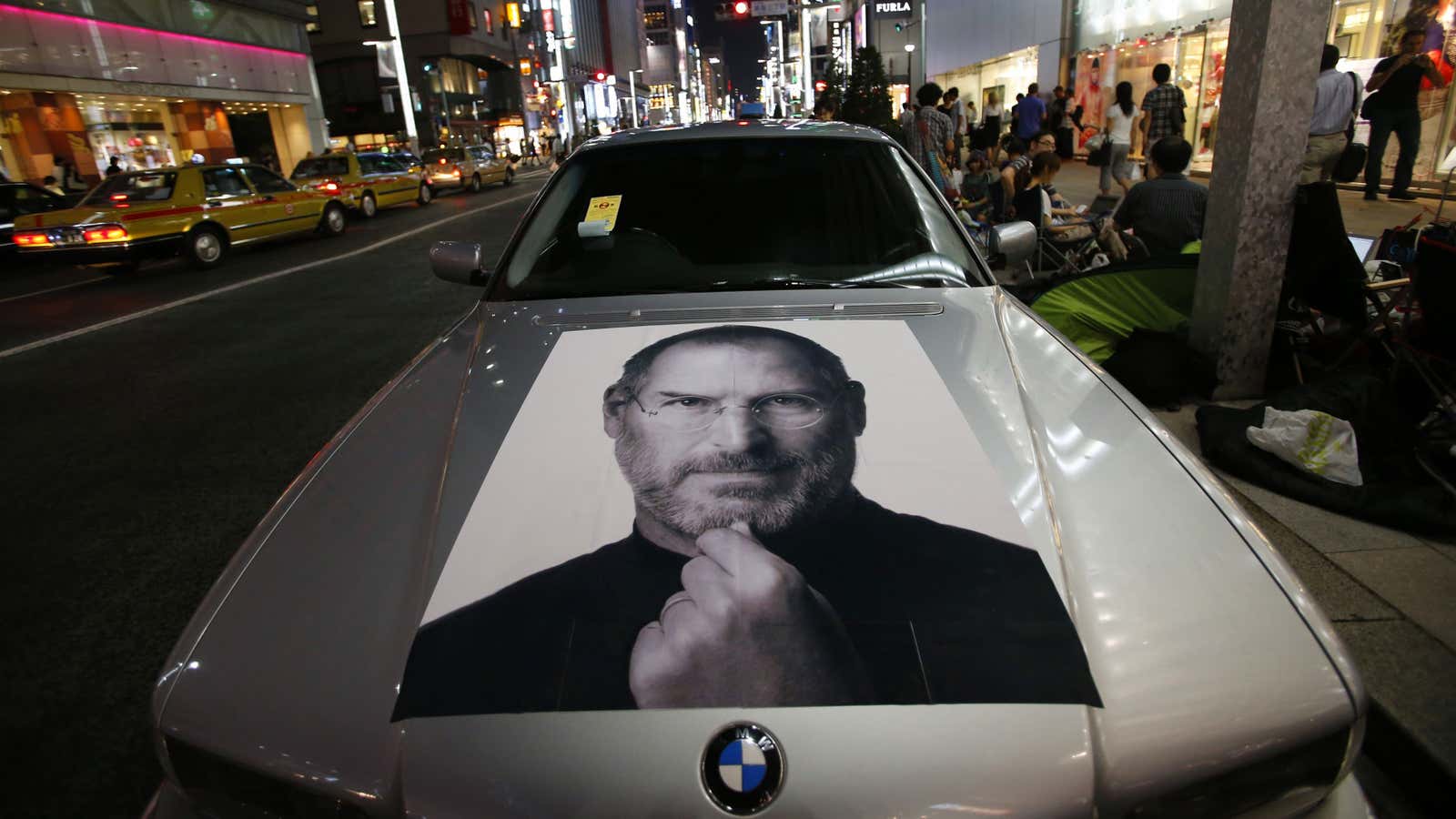Beside free publicity, and huge amounts of it, the putative Apple Car raises interesting questions about car manufacturing, the future of automobiles, and the part that an interloper such as Apple could play in this century-old industry.
The volume of comments and Twitter traffic in reaction to last week’s Monday Note, “The Fantastic Apple Car,” was just one small rivulet in this week’s gusher of rumors, jokes, and proclamations about Apple becoming a car manufacturer. Bloomberg takes the car as fait accompli, telling us that “Apple…is pushing its team to begin production of an electric vehicle as early as 2020.” A recent 9to5mac post provides a long list of car experts and executives hired by Apple, thus giving more than gossipy credence to the story of Apple committing huge resources to such a project.
There are many products and services I’d love to see Apple get into. For example, how could Apple not do a better job than Comcast, Verizon, and AT&T at providing wired and wireless broadband? But the Cupertino company stays out of that arena for a number of reasons: regulations, fragmentation, manpower, and equipment both under and above ground.
One could argue that cars present a simpler challenge. Roads are roads and national regulations are well understood. And, yes, a car made and serviced by Apple could be an affordable quality product.
Still, I remain a skeptic. Monday Note commenter Hamranhansenhansen does a good job of summarizing my position:
“[…] if Apple were doing a car, why not just buy Tesla in the exact same way they bought Beats? Apple already made headphones for about 14 years and then bought Beats anyway. Tesla is the Beats of cars, and it is local to Apple and already has a factory and really great mindshare. If they did not want Elon Musk, he has SpaceX and could likely make a graceful exit. Apple’s car line would then be named “Tesla” same as their PC’s are named “Mac” and headphones named “Beats.” The price of Tesla right now is excellent, especially considering the battery crossover to iPhones and iPads.
“It makes much more sense to me that Apple is going to become a car component manufacturer, so that BMW, Bentley, Ferrari, etc. can buy Tesla-style in-car dash systems from Apple, just as Ford bought the awful Sync from Microsoft. The itch that needs to be scratched is Jony Ive getting into his Bentley and his iPhone won’t hook up reliably and sits in a bolt-on cradle.”
This week, I’ll add three vignettes, three morsels of food for thought about the hotly desired AppleCar.
For more than 20 years, two Apple execs roamed the earth in search of technologies, suppliers, contractors, and entrepreneurs to acquihire. In their travels, they fortified themselves at many of the best restaurants on the planet, becoming friends, or so they thought, with the astute chefs, sommeliers, and maîtres d’hôtel.
Impressed by their own accumulated knowledge of the restaurant industry the two decided to parlay the money and ambition they had been soaking in at Apple and open a high-concept, high-end saloon. They spared no expense on location, decoration, wine cellar, state-of-the-art kitchen, big name chef, experienced front-of-the-house staff and, of course, a publicist.
After two miserable years of quarrels with prime donne, theft and drug use by the staff, bad reviews planted by rivals, and calamitous “surprise” food inspections, our two wannabe restaurateurs closed their dream place, millions of dollars gone to waste.
They got confused. After all the years they spent in the best restaurants in the world, they thought they knew the restaurant business. What they did know was how to be great patrons…how to talk wine with the sommelier, when to compliment the chef, how to respectfully send back a dish that isn’t just so. They were customers, not restaurateurs.
You know where I’m going with this: Some Apple execs are great car connoisseurs—one senior VP is even on the board of directors of Ferrari. They have the resources to own and operate, on roads and tracks, many of the choicest automobiles on the planet. But that doesn’t automatically give them the knowledge to be manufacturers.
The second vignette takes me back a few decades to Northern Italy. During my years at Apple, I took an industrial design team to pay a visit to Giorgetto Giugiaro, a towering figure in the automobile industry who would later be recognized as one of the Car Designers of the Century. (Both Wikipedia articles just linked to make for terrific reading, if you’re into cars.) Our goal, in visiting Giugiaro, was to find fresh inspiration, new stanzas for our design language. I had long admired not only the aesthetics of the cars Giugiaro had designed, but also their practicality and efficiency. The historic success of his work on the Volkswagen Golf re-started the company and put it on a trajectory to one day challenge Toyota.
When we walked into Giugiaro’s Italdesign offices, a surprise awaited us. When I thought of industrial design—esthétique industrielle in French—aesthetics first came to mind, industry second. But what Giugiaro showed us was the opposite: The industrial side of his practice was, for him, truly foremost. In his own words, his job wasn’t to design an award-winning shape for a car, his job was to design the process, the factory that would eventually excrete a continuous flow of vehicles.
An example from Giugiaro’s portfolio: The Renault 19. At a time when the French manufacturer saw a hole in its product line, Giugiaro raided the corporate parts bank, designed a production line, installed it, and trained the production technicians.
More than 25 years later, the conversation is still with me: One doesn’t design a car, one designs the machine, the process, the supply ecosystem that produces the vehicle. As analyst Horace Dediu puts it, innovations are in the production system:
(Beside his Asymco blog and @asymco Twitter stream, Dediu also produces Asymcar, a podcast series dedicated to the auto industry.)
I would love to be wrong about the AppleCar—I join the chorus of those who would love to see what Apple could do with a car—but we’ve heard a bit too much about Apple’s ability to design an interesting electric vehicle and not enough about the industrial part, about the machine that makes the machines.
Finally, there’s Carlos Ghosn. (Again, you won’t regret reading the Wikipedia article.) How do you compete with this man?
The Brazilian-born Ghosn spent his early school years in Lebanon, attended the prestigious École Polytechnique in Paris, and started his automotive career at Michelin, the very techie and idiosyncratic tire maker. After rising to CEO of Michelin North America, Ghosn was recruited by the ailing Renault, and Ghosn managed to turn two companies around by creating a global alliance with Nissan. He’s now the CEO of both companies–and a hero in Japan, featured in manga (a comic strip genre.) He speaks Portuguese, Arabic, French, English, and some Japanese.
As CEO of Renault-Nissan, Ghosn was instrumental in the creation of the best selling electric car on the market today, the Nissan Leaf (another interesting Wikipedia read.) With 158,000 units sold, representing about $6 billion, the Leaf is a well-rounded implementation of an affordable “pure” electric car (as opposed to hybrids such as the Toyota Prius, or the Chevy Volt, or BMW i3 and i8 that are assisted by small accessory gasoline engines.)

I don’t know which fine cars Ghosn drives for pleasure, but he certainly knows how to make the machines that create them. If Apple wants to make and sell electric cars in numbers large enough to garner revenue in multiples of $10 billion—the unit of currency for Apple in 2020—it will first have to figure out how to beat Ghosn at his game.
You can read more of Monday Note’s coverage of technology and media here.




